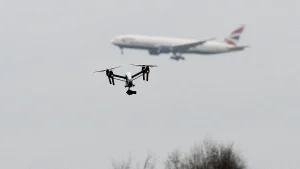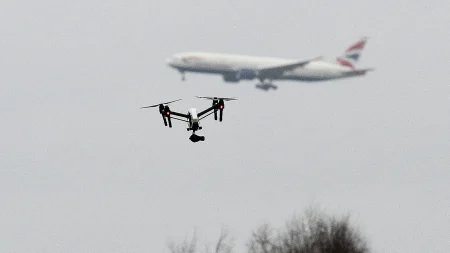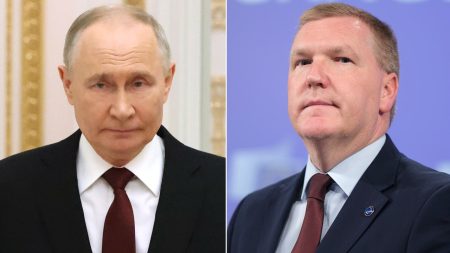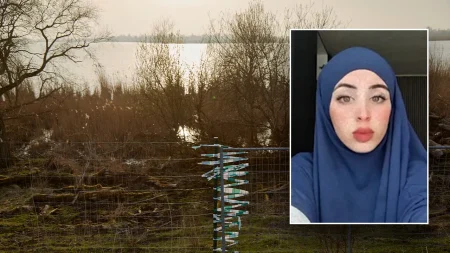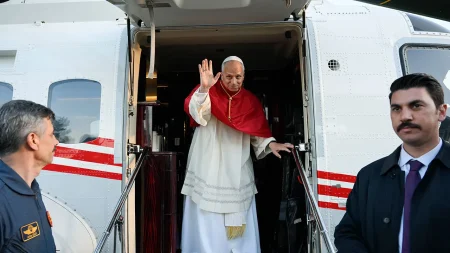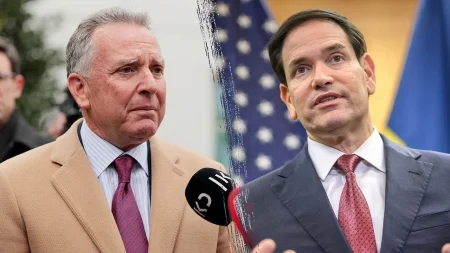Nepal’s Descent into Chaos: Generation Z Leads Historic Protests
In a stunning display of civil unrest, Nepal has been engulfed in unprecedented violence as young protesters, predominantly from Generation Z, have taken to the streets in a dramatic rejection of the political establishment. The protests, which began as a response to government censorship of social media platforms including Facebook, X, and YouTube, quickly evolved into something far more significant: a wholesale repudiation of Nepal’s political system, which many young people view as irredeemably corrupt. The unrest has resulted in at least 19 deaths and hundreds of injuries, marking one of the most severe political crises in Nepal’s recent history. The demonstrations reached their climax on Tuesday when protesters stormed parliament, set fire to government buildings, and forced Prime Minister KP Sharma Oli to resign under the pressure of the mounting chaos.
The scenes from Kathmandu paint a picture of a nation at a breaking point. Black smoke billowed from the historic Singha Durbar palace complex, which houses the country’s main administrative offices, as protesters expressed their frustration through increasingly destructive means. In particularly troubling developments, demonstrators targeted the homes of current and former government officials, including former Prime Minister Jhala Nath Khanal, whose wife Ravi Laxmi Chitrakar suffered critical burns when protesters allegedly set their residence ablaze. Prime Minister Oli’s own home was not spared, becoming another target of the demonstrators’ rage. The scale of the destruction reflects the depth of disillusionment among Nepal’s youth, who feel they have been abandoned by leaders more interested in personal gain than national development.
“I am here to protest about the massive corruption in our country,” student Bishnu Thapa Chetri told reporters, articulating a sentiment shared by many of his peers. “The country has gotten so bad that, for us youths, there is no grounds for us to stay.” This statement encapsulates the existential crisis facing Nepal’s younger generation, who see limited economic opportunities at home and feel compelled to seek better futures abroad. The frustration is particularly acute given Nepal’s significant resources and potential, which many believe have been squandered by decades of ineffective governance and endemic corruption. While the government’s social media ban may have been the immediate catalyst for protests, it merely uncovered deeper grievances that have been simmering for years.
The unrest has led to extraordinary breaches of security across the country. Reports indicate that nearly 900 inmates escaped after protesters stormed two prisons in western Nepal, adding another layer of complexity to an already volatile situation. The U.S. Embassy in Kathmandu has urged American citizens to avoid large gatherings, reflecting the unpredictable nature of the demonstrations. Perhaps most ominously, Nepal’s army chief, Ashok Raj Sigdel, has warned that the military might “take control of the situation” if the violence continues, though he simultaneously appealed for dialogue with protesters. This suggestion of potential military intervention highlights the gravity of the crisis and the failure of civilian leadership to address the root causes of public discontent.
The dramatic events in Nepal illustrate the growing global trend of youth-led movements challenging established political orders. From Hong Kong to Chile, from Lebanon to Thailand, young people have increasingly taken to the streets to demand fundamental changes to systems they view as failing to address their needs and aspirations. What distinguishes the Nepal protests is their sudden explosion into violence and their rapid achievement of a major political objective—the resignation of the prime minister. Yet the protesters’ demands go far beyond a change in leadership; they are calling for the dissolution of parliament and a complete overhaul of a political system they see as fundamentally broken. The movement reflects a generation’s loss of faith in the promise of democracy as currently practiced in Nepal, which emerged from a decade-long civil war in 2006 and abolished its monarchy in 2008.
As Nepal navigates this period of intense turmoil, the path forward remains uncertain. The resignation of Prime Minister Oli creates a power vacuum that could lead to further instability if not carefully managed. The grievances that drove young people to the streets—corruption, lack of economic opportunity, and political stagnation—will not disappear with a change in leadership alone. For Nepal to emerge stronger from this crisis, its political class must engage in serious self-reflection and genuine reform. The international community, including regional powers like India and China, which both have significant interests in Nepal, will also play important roles in supporting stability. Ultimately, however, Nepal’s future lies in the hands of its people, particularly the young generation that has so dramatically announced its presence on the political stage. Their demand for a more accountable, transparent, and effective government represents both a challenge and an opportunity for a nation at a crossroads.

